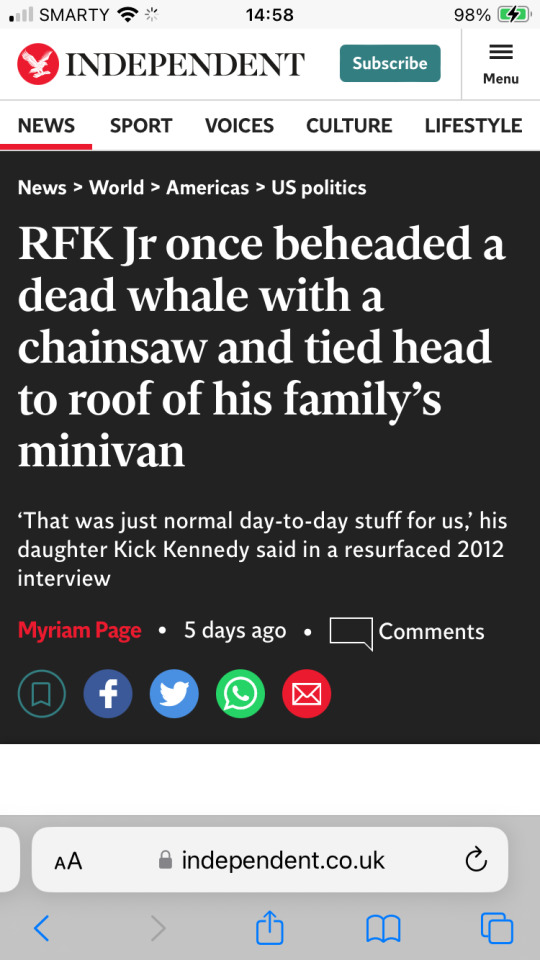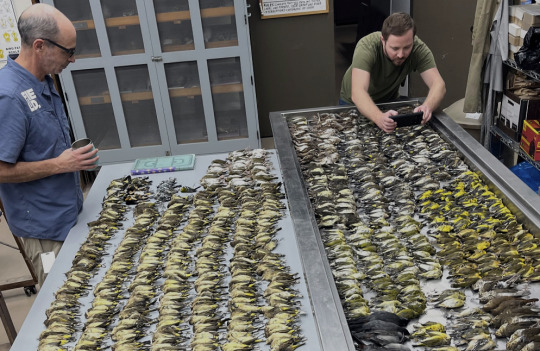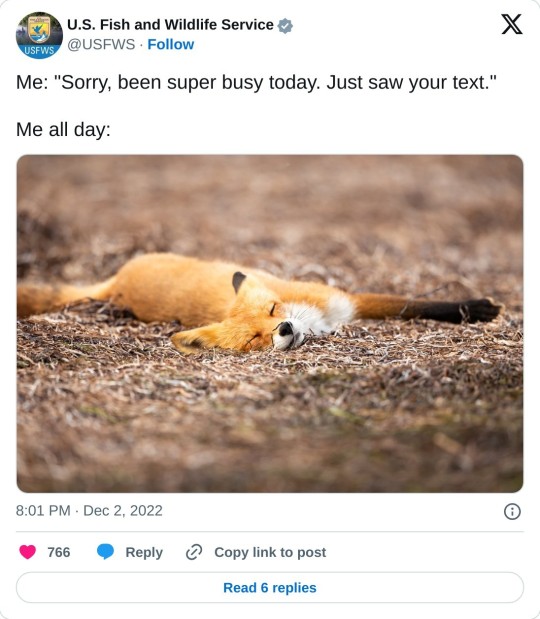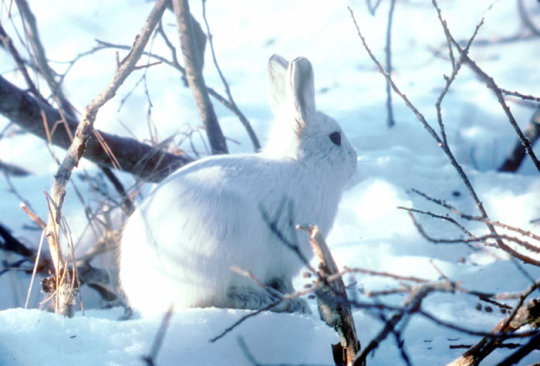#us fish & wildlife service
Explore tagged Tumblr posts
Text

Y'all needed a baby black bear in your life. Happy Friday. Make that weekend special. "American Black Bear Cub" by U.S. Fish and Wildlife Service - Midwest Region is marked with Public Domain Mark 1.0.
#bear#friday#friday bear#friday bear cub#cub#bear cub#black bear#black bear cub#cute#animals#nature#wildlife#outdoors#weekend#midwest#us fish and wildlife service#🐻
804 notes
·
View notes
Text

1K notes
·
View notes
Text
YOINK!
Source: US fish and wildlife service on instagram (https://www.instagram.com/reel/C817Hl-qrm-/)
#black footed ferret#ferret#us fish and wildlife service#animals#today i learned “usfw” on tumblr is used for “unsafe for work”
340 notes
·
View notes
Text

Egg Rock Light, Frenchman Bay, Winter Harbor, Maine. Until the lighthouse was built in 1875, Egg Rock was known for its massive amount of sea bird nests. Today ownership belongs to the U.S. Fish & Wildlife Service, and is managed as part of the Maine Coastal Islands National Wildlife Refuge. If you're boating about the Bar Harbor area, be sure to be on the look out for the numerous harbor seals and black guillemots that are usually loitering around the lighthouse today.
#Egg Rock Light#Frenchman Bay#Winter Harbor#Maine#Bar Harbor#Egg Rock Lighthouse#Egg Rock#illustration#art#drawing#lighthouses of maine#Maine lighthouse#seals#harbor seal#black guillemot#guillemot#Maine Coastal Islands National Wildlife Refuge#us fish and wildlife service#nature#wildlife#animals#house#island#maine life#island life#seabirds#gull rock
42 notes
·
View notes
Text

Fucking WHAT????!!!!!!!!!!
Yeah it’s real!
Could somebody report his ass to the NOAA for this?
Maybe the US Fish & Wildlife Service too.
Maybe any other relevant agencies.
I’ll drop some links for anyone wishing to do so as well.
Here they be.
Pretty sure this violates the US Endangered Species Act and a few other laws too.
Hopefully something comes from this.
This shit is messed up!
*WHALE JUICE?????!!!!!!!!!!*
No I don’t care that it was already dead!
And I don’t care if the brain worms told him to do it!
This is VILE!
The ableism, antivax fuckwittery and suspicious death of his wife, and endorsing Trump was bad enough.
But this is insane!
This is like some serial killer shit!
What is it with this guy and messing around with dead animals?
And where is the head now? What, does he have it stored somewhere?!
Sickening shit!
Feel free to reblog I guess?
#dougie rambles#personal stuff#news#political crap#tw animal death#tw corpse desecration#tw rfk jr#rfk jr#brain worms#robert f kennedy jr#fuck rfk jr#sick shit#fuck trump#fuck the gop#american politics#noaa#us fish & wildlife service#whale#wildlife#marine mammals#cetaceans#cetacean stranding#death stranding#loosely#fucking hell#disgusting object#obscene#unsanitary#deranged behavior#feel free to reblog
16 notes
·
View notes
Text
As U.S. conservationists continue to fight for federal protections that would cover gray wolves in the northern Rocky Mountains, research released Wednesday highlights just how important the apex predators are to the western United States.
The study was published in the journal BioScience and led by William Ripple, a scientist at Oregon State University (OSU) and the Conservation Biology Institute known for his work on trophic cascades and carnivores as well as his demands for climate action.
The paper uses gray wolves to show the trouble with "shifting baselines," which, "in ecology encapsulate the gradual and often unnoticed alterations in ecosystems over time, leading to a redefinition of what is considered normal or baseline conditions."
As the study details:
Gray wolves (Canis lupus) in North America have experienced a substantial contraction of their historical range, at one point almost disappearing from the contiguous 48 United States. However, their conservation is important in part because of the potential cascading effects wolves can have on lower trophic levels. Namely, the proliferation and changes to behavior and density of large herbivores following the extirpation or displacement of wolves can have major effects on various aspects of vegetation structure, succession, productivity, species composition, and diversity, which, in turn, can have implications for overall biodiversity and the quality of habitat for other wildlife.
"By the 1930s, wolves were largely absent from the American West, including its national parks," Ripple said in a statement. "Most published ecological research from this region occurred after the extirpation of wolves."
"This situation underscores the potential impact of shifting baselines on our understanding of plant community succession, animal community dynamics, and ecosystem functions," he continued.
The researchers examined journal articles, master's theses, and Ph.D. dissertations from 1955 to 2021 that involved field work in national parks in the northwestern United States for whether they included information on the removal of gray wolves.
They found that "in total, approximately 41% (39 of 96) of the publications mentioned or discussed the historical presence of wolves or large carnivores, but most (approximately 59%) did not. The results for the theses and journal articles were similar."
While the researchers focused on wolves, Robert Beschta, co-author and emeritus professor at OSU, noted that "in addition to the loss or displacement of large predators, there may be other potential anthropogenic legacies within national parks that should be considered, including fire suppression, invasion by exotic plants and animals, and overgrazing by livestock."
Ripple stressed that "studying altered ecosystems without recognizing how or why the system has changed over time since the absence of a large predator could have serious implications for wildlife management, biodiversity conservation, and ecosystem restoration."
"We hope our study will be of use to both conservation organizations and government agencies in identifying ecosystem management goals," he added.
Amaroq Weiss, senior wolf advocate at the Center for Biological Diversity (CBD), welcomed the study, tellingInside Climate News that "I think this is a really important paper, because sometimes science advances at a certain rate without a self-introspection."
"Nature is a really complex tapestry," she said. "It's woven together by threads that hold it together and keep it strong. When you start to pull threads out like you remove apex predators, the whole thing begins to unravel."
The paper comes amid a wolf conservation battle that involves Weiss' group. In February, the U.S. Fish and Wildlife Service (FWS) determined that Endangered Species Act protections for the wolves in the northern Rocky Mountains were "not warranted."
Two coalitions of conservation organizations, including CBD, swiftly filed notices of their intent to sue over the decision if FWS didn't change course. After the legally required 60-day notice period passed, they filed the lawsuits in April.
Earlier this week, "the cases were voluntarily dismissed and immediately refiled to avoid any potential arguments from the defendants that the plaintiffs failed to give the secretary of the interior proper 60-days' notice under the Endangered Species Act," Collette Adkins, an attorney who leads CBD's Carnivore Conservation program, told Common Dreams in an email Thursday.
"Plaintiffs believe that their case was properly noticed," she said, "but we refiled to avoid any further disruption of the proceedings."
#ecology#enviromentalism#let wolves live#wolves#wildlife#us fish and wildlife service#wildlife conservation#ecosystem restoration#biodiversity conservation#biodiversity preservation
14 notes
·
View notes
Text

Excerpt from this press release from the Center for Biological Diversity:
The Center for Biological Diversity and 29 other bird and wildlife conservation organizations from 24 states filed a legal petition today asking the U.S. Fish and Wildlife Service to establish a permitting process for commercial buildings to protect birds from deadly window collisions.
Today’s petition proposes a permitting process under the Migratory Bird Treaty Act that would require building owners to use proven measures to reduce collisions, such as films, curtains or others means that make glass visible to birds.
According to recent studies, buildings in the United States kill more than 1 billion birds each year. This problem has contributed to a roughly 30% decline in birds since 1970 — or an estimated 3 billion fewer birds gracing the skies in North America.
“The Fish and Wildlife Service can’t keep letting buildings kill vast numbers of birds every year when there are known solutions to this tragic problem,” said Tara Zuardo, a senior advocate at the Center. “Migrating birds are crashing into walls of glass that leave them broken and dying, and federal officials have a legal duty to push for basic preventative steps. As bird populations dwindle, this threat affects every American in every state, and it needs to be addressed.”
In January 2021 the Service finalized a rule that upended decades of enforcement under the Migratory Bird Treaty Act. This unlawful reinterpretation failed to prohibit the foreseeable killing of migratory birds. In response to successful litigation by the Center and allies, the Service in 2021 revoked this rule and promised to issue regulations to address infrastructure known to cause bird deaths.
But in December 2023 the agency withdrew much-needed draft migratory bird protection rules, claiming that it requires an indefinite amount of time to pursue the rulemaking and left millions of birds vulnerable to building and window collisions.
Today’s petition notes that the Service admits that building collisions are one of the greatest threats to America’s migratory birds. These collisions are driving declines in warblers, sparrows and many other birds, including a number of sensitive species. That means the conditions leading to these collisions require regulation under the Migratory Bird Treaty Act. The Service already administers a permitting process to reduce harm to bald and golden eagles, so it could also do so for migratory birds.
#birds#bird collision with buildings#migrating birds#Migratory Bird Treaty Act#migratory bird protection rules#US Fish and Wildlife Service
8 notes
·
View notes
Text

#img#described in alt text#twitter#foxes#usfws#us fish and wildlife service#reposting this so there’ll be a version with alt text & a proper source link
21 notes
·
View notes
Text

Someone counted Tick Georg
100 notes
·
View notes
Text







#giraffe#Masai giraffe#nyerere national park#tanzania#giraffe population#us fish and wildlife service#endangered species act#federal protection#endangered species#threatened species#biodiversity#ecosystem#wildlife#giraffe conservation#west african giraffe#kordofan giraffe#nubian giraffe#reticulated giraffe#save wildlife#ban illegal hunting#animals#protect wildlife
2 notes
·
View notes
Text

3K notes
·
View notes
Text

The Arctic hare lives in the tundra and in rocky mountainous areas. It needs places with enough cover to let plants grow and keep snow from getting too deep.
Source: nhpbs.org
#archive#archiving#web archive#arctic#arctic hare#hare#rabbit#animals#snow#us fish and wildlife service#pbs
42 notes
·
View notes
Text

2 notes
·
View notes
Photo

13 notes
·
View notes
Text
What does the US fish and wildlife service actually DO?!
2 notes
·
View notes
Text
The U.S. Fish and Wildlife Service last week withdrew much-needed draft migratory bird protection rules the agency promised to propose two years ago. These rules are necessary to protect migratory birds from being killed by preventable hazards, including by window collisions, like October’s massive bird mortality event at McCormick Place in Chicago.
“It’s nonsensical that after two years of delay, the Fish and Wildlife Service withdrew these proposed protections with the threadbare excuse that even more delay is needed,” said Tara Zuardo, a senior advocate at the Center for Biological Diversity. “Yet despite the lack of regulations, this agency still has the power to levy fines against parties that cause the death of birds, and federal officials should use their authority to do so.”
Under the Trump administration, the Service finalized a rule that upended decades of enforcement of the Migratory Bird Treaty Act. This radical and unlawful reinterpretation concluded the law did not prohibit the unintentional killing of migratory birds.
In response to successful litigation by the Center and allies, the Biden administration revoked this rule in 2021. The agency promised to issue regulations to address situations like what happened at McCormick Place, where infrastructure is known to cause bird deaths.
However, after two years of delay, the agency withdrew its own proposed regulations, claiming that it requires an indefinite amount of time to work on the rulemaking. This leaves billions of birds vulnerable to increasing threats across the landscape like collisions with windows and communication towers.
#ecology#enviromentalism#migratorybirds#bird conservation#US Fish and Wildlife Service#wildlife services#Fuck wildlife services
21 notes
·
View notes